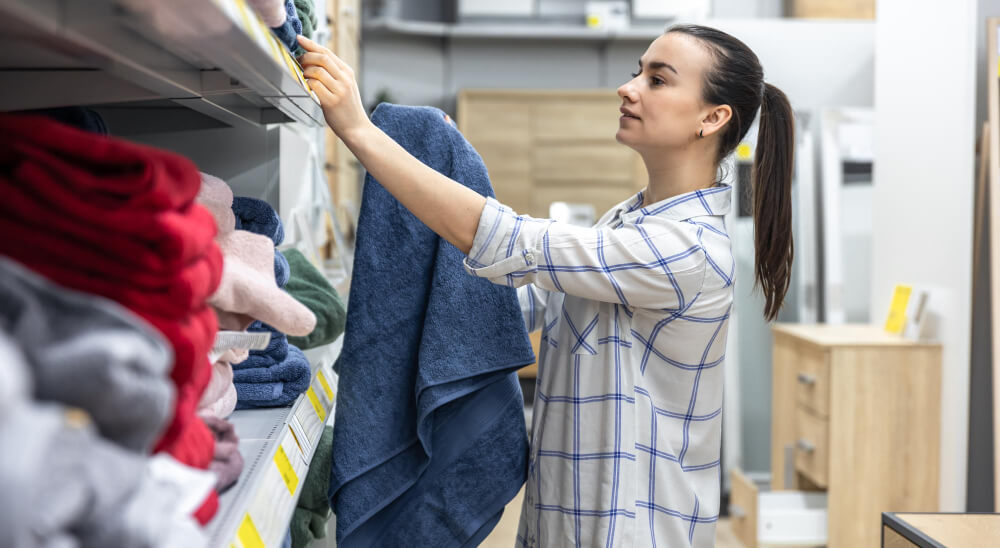To succeed in the furniture industry, you need more than just creating beautiful furniture items. You need an efficient marketing strategy to drive customers to your store and make them loyal. Since most buyers see furniture as a long-term commitment, you need more effort to market and convince them than a retailer selling common FMCGs. This article will show you the top 15 essential furniture marketing ideas to improve customer experience and get your products to the right target customers at the right time.
Why are furniture marketing ideas important?

The furniture market is constantly changing with new trends and shifts in customers’ buying behaviors. Having excellent products doesn’t enough to compete. A thorough marketing strategy with creative execution ideas is the missing piece for your business’s success. You need to be on top of customers’ minds when they need a furniture item, and provide an outstanding shopping experience for them to complete the purchase.
In addition, marketing plays an important role in building customers’ trust and maintaining long-term relationships with them. You must serve customers in all stages of their journey: attracting potential customers to explore your products, engaging with them in their shopping experience, and delighting them with stellar customer service after purchasing.
To turn strangers into loyal customers, you must have an integrated marketing strategy that combines inbound and outbound methodology while providing an omnichannel experience and a better personalized experience for your customers. Here’re the 15 essential furniture marketing ideas to achieve it.
15 essential furniture marketing ideas for your business

1. Have a great website
Most customers will do an online search for your company before they shop online. Thus, your website is a crucial destination for customers to find, explore, and buy products. A high-quality website should have content-rich information, great visuals, professional design, fast loading speed, and optimized for mobile. If you make a good first impression on your website, you can keep customers staying longer on your site to explore your brand and products. This leads to a higher chance to convert sales.
In addition, it should have a strong backend with a stable eCommerce feature that connects with a homeware and furniture POS for customers to order and pay. All steps to complete a transaction must be intuitive to follow, such as adding to cart, placing an order, filling in address and payment method, etc. You should also provide a chat feature for support and consultation.
2. Leverage user-generated content
Another approach to marketing furniture is encouraging customers to share their stories. These real-life stories are perfect content materials to market your brand and show how your products help improve customers’ life.
You can run a contest for customers to tell their personal stories connected to a piece of furniture from your store. This is the social proof that can touch new potential customers and drive more purchases.
3. Create impactful visuals
For furniture marketing, showing stunning visuals of the items and how they fit into the room is one of the strongest effects when customers consider purchasing. That’s why customers traditionally go to a showroom to see the furniture pieces in person and visualize if they are a match for their room.
However, furniture retailers now have other ways to ease the online shopping experience through high-quality images of the products. You should take clear pictures of your products from many angles, showing the sizes or how it is in multiple rooms.
4. Streamline story-telling content
Good stories can revoke feeling and sympathy. That’s how you can connect with new customers and persuade them to buy. To tell good stories, you can consider the AIDA method:
- Attention: Attract the readers immediately within the title and the first paragraph;
- Interest: Tell a story that has an interesting storyline, showing the character, the problem, and how to solve the problem with your products;
- Desire: Make customers see themselves in the stories and create a desire to make a purchase;
- Action: Call on the reader to take a specific action, such as visiting your website or checking out a certain product.
5. Video marketing
People are increasingly consuming videos as their favorite content format. Thus, video marketing cannot be left out of your strategy. Videos can be used across all stages of the customer journey depending on the purposes and the messages you want to convey. Here’re some ideas for your video marketing:
- Product review video: Before placing an order, nearly 9/10 of customers will read reviews, while 79% of shoppers say they trust online reviews the same as personal recommendations. A detailed review video that explains the products with positive feedback with push customers to make a purchase. If you know a customer is happy with your product, ask them if they’re willing to record a testimonial video sharing their experience with other shoppers.
- Demonstration videos: This type of video is helpful for pieces of furniture that need installation or conversion into multi-use pieces. For example, you can take a video showing how to change a desk from sitting to standing to instruct customers how to use a convertible-height work surface.
- Training videos: You can offer tips around furniture, for example, how to style a room, how to choose upholstery, how to clean a couch, etc. These are useful content that can gain you a lot of views and also direct viewers to your site.
6. Social media marketing
In this digital area, most of your customers are on social media in some form, making it a powerful way to reach new customers and engage with them. You can consider the following ideas to boost your furniture marketing using multiple social media channels:
- YouTube: Create videos with clickable pop-ups that take users directly to websites or product pages to learn more and buy;
- Tiktok: Make short videos that showcase the best angles and features of the furniture, and link to your Tiktok shop;
- Instagram: Encourage customers to post pictures of how the furniture is placed in their room and tag your brand in their posts;
- Facebook: Run ads for your furniture, targeting people who are likely to visit your website and buy your products;
- Pinterest: Use customer-generated images of styled rooms that have your furniture pieces and attach the link to your product page.
7. Niche advertisements
Running mass advertisements to reach many people doesn’t guarantee new customers. Think about who is the main target that will use your products, such as their demographics, pain points, what they like and dislike, and where you can reach them. Once defining clearly your target, you can give them the right offers at the right time and right place.
This is especially useful if you sell a certain type of furniture, for example, rustic wood furniture is likely to appeal to cabin and farm owners, so you can target the right people with your ads.
8. Lead magnets
One of the smartest furniture marketing ideas is the lead magnet. It is incentives that are given away to collect contact details. For future businesses, it can be a coupon, a free item, a downloadable whitepaper, a consultancy video, or anything perks that add value for customers and build trust with them. Once you have their contact, you can send them more materials and suggest product offers personalized for them. Therefore, you can drive them to your store and boost sales.
9. Paid ads
Advertising furniture via paid digital ads on Google and social media is one of the most popular outbound marketing techniques. There’re many forms of ads, just to mention the most commonly used:
- Paid search: Promote your brand through keywords to appear on engine result pages. You should have a plan for target keywords that customers are likely to search for and place an ad for the keywords. This allows you to capture customers early once they have an interest in furniture.
- Display retargeting: Show ads to customers who’ve left their shopping cart on your website. You can also show similar items they may like but didn’t add to their carts. This method reminds customers to complete their orders, thus bringing you more sales.
- Paid social: Target audiences who can see your ads depending on your purpose, such as to reach a mass audience, raise engagement, or convert sales. You can set parameters based on the audience’s demographics, interests, or behaviors (e.g. showing to people who’ve visited your site or viewed your products before).
10. Affiliate marketing
Affiliate marketing is booming in the last few years as one of the top furniture marketing ideas. This method lets furniture retailers collaborate with publishers like KOLs and KOCs to promote their products. The publishers have their specific group of followers who listen to their opinions, thus helping you to reach people more efficiently. The best thing is you only have to pay commissions when customers purchase on your site via an affiliate code, making a high ROI for this strategy. Your product link will have a reference code to trace back to the publishers who’ve successfully driven customers to purchase.
11. Email campaigns
When customers make an online purchase, you can collect their email addresses for your future email marketing purposes. After building an email list, you can design suitable email campaigns for your customers, from promotions to discounts to personalized emails for special groups of customers.
12. Loyalty programs and referral rewards
Consider loyalty programs to keep customers coming back. Some ideas for furniture retailers are offering discounts or free items when customers reach a certain level of the value spent.
Another option is offering rewards for people who refer their friends to your store. This brings you new customers and makes the existing ones happy. Word-of-mouth is a powerful marketing method that can help you grow significantly. If you already have wonderful products, you only need a few incentives for customers to introduce others.
13. Mobile payments
For tech-savvy customers, you should make the checkout experience as pleasant as possible. Think about offering mobile payment methods like Apple Pay, Google Pay, and Paypal, along with traditional payments via cash, credit, debit cards, etc.
To do this, investing in a homeware and furniture POS system that supports multiple types of payments will be a big help.
14. Augmented reality
Augmented reality is increasingly applied in digital marketing and is loved by some of the largest furniture retailers like IKEA. An app like IKEA Place allows shoppers to use their phone’s camera to view the furniture items in their rooms, helping them to visualize how the products would look in their environment. Retailers are embracing this technology as a cool way to display furniture online and provide a joyful and interesting experience to customers.
15. Click and collect
Click and collect is a creative idea for furniture companies. Customers can place an order online and get notified when the products are ready to pick up in-store or at other designated pickup locations. This method utilizes the convenience of online shopping plus the experience of seeing and touching the real furniture in person.
FAQs
1. What is the target market for furniture?
Defining your target customers is important if you’re launching a new product or opening a new store. Here’re a few aspects to classify customer segments:
- Demographics: Individual customers (young couples, families with children, university students, people who just move homes, people with specific needs or interests, retirees, etc.) and business customers (based on the size of the office). For each segment, customers will have different criteria to make purchase decisions, for example, price, design, quality, comfortability, multi-purpose features, etc.
- Reasons to buy: to change old furniture, to furnish a new house, to buy a gift, to change the look of the home, to furnish an office or a commercial space, etc.
2. Is opening a furniture store profitable?
Furniture stores make a profit by purchasing products from a factory dealer at a wholesaler price point and selling them to customers with a higher markup. Most furniture stores have an 80% markup from their supplier’s price. If you can control your operating costs efficiently (such as marketing costs, rental costs, payroll, etc.), you can have a good profit margin selling furniture. Check this article on how to start a furniture business if you’re interested.
3. Why is furniture POS important?
Furniture businesses rely heavily on their logistics and customer service to close sales. Having a strong POS system will empower the company to automate many processes, such as handling the furniture supply chain, tracking inventory flow, managing sales, analyzing customers’ data, etc.
4. What are the features of a POS system for furniture businesses?
To streamline your business, you need a good-fit furniture POS system with customized features:
- Procure and control stock from different suppliers,
- Check real-time inventory level across channels,
- Manage product SKUs,
- Process payment smoothly in in-store POS,
- Fulfill online and offline orders,
- Manage customer data, their purchase history, store credit, etc.
- Create loyalty programs and referral programs.
5. What are the best furniture POS systems?
- Magestore POS,
- Connect POS,
- Lightspeed POS,
- Hike POS,
- Vend POS,
- Storis POS.














